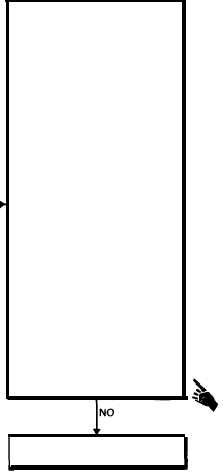TM 55-1520-240-T
2-1 VIBRATION ANALYSIS
2-1
2-1.1 VIBRATION ANALYSIS SYSTEMATIC APPROACH
2-1.1
1.
All helicopters have a certain amount of vibration 2.
especially during changes in attitude and at high
airspeeds and power settings. Excessive vibration
is any vibration that is different from the vibration
normally sensed in a particular helicopter, any vi-
bration that is noticeable in only one pan of the
helicopter, or any vibration that causes discomfort
to personnel or damage to cargo carried by the
helicopter.
GO TO TROUBLE SYMPTOM
TASK 2-1.2.1.
START
There are two types of vibration, low frequency
and high frequency. Low frequency vibration cycles
can be counted or identified by a beat. A 1/rev
vibration frequency is 3.75 cycles per second at
225 rotor rpm (100% N2). This is slow enough to
count. A 3/rev vibration frequency is 11.25 cycles
per second which is too rapid to count; however,
the individual beats are noticeable.
4.
RECORD AIRCRAFT CONFIGURATION
Was cargo carried either internal or external? Yes — No —
2. If internal cargo carried:
a. What was weight? _ Ibs
b. How was it secured?
1 . F l o o r _
2 . S t r u c t u r e _
3. If external cargo carried:
a. What was weight? — Ibs
b. What was configuration? —
4. What was FAT? — ° C .
3.
With
high
frequency
vibration,
the
vibration
to be more of a buzz. Rotor generated vibration
can usually be observed at 1, 3, and 6 per rev
(1350 cycles per minute). 9, 12, and 15 per rev,
drive system vibrations tend to be in the higher
frequencies. The Chadwick Helmuth Vibrex balanc-
er 177M6A or 177M7A can be used to record vi-
brations up to 99,900 cycles per minute (1665
Hz). The Chadwick Helmuth Spectrum Analyzer,
Model 192A, is capable of recording vibrations up
to 900,000 cycles per minute (15,000 Hz). Table
2-1.2.2 lists the most common CH-47D exciting
frequencies in Hertz (cycles per see), and cycles
per minute at 225 rotor rpm (100% N2).
RECORD VIBRATION CHARACTERISTICS
(Circle characteristics)
Vibration frequency:
a.Vibrtion frequency of 3.75 cycles per second (1/rev) could be counted
(low frequency).
b. Vibration frequency was too rapid to count but frequency beat
was noticeable (low frequency) (3/rev).
c. Vibration frequency was too rapid to count and was or wasn't
accompanied by a buzz or high-pitch tone (high frequency).
d. Vibration caused double vision (high frequency).
Vibration location:
e. Both sides of cockpit.
f. Pilot’s side of cockpit only.
g. Copilot’s side of cockpit only.
h. Directional pedals.
i. Cabin.
Vibration strongest in:
j. Cockpit.
k. Cabin.
Flight phase vibration noticed:
l. All the time.
m. Only when cyclic changes or large power changes made.
Note: If m. circled, identify maneuver.
n. Takeoff.
o. Transition.
p. Climb.
q. Autorotation
r. Landing.
s. Other (describe).
The Vibrex system 177M6A or 177M7A should
be used to measure low frequency rotor generated
vibration (1, 3, and 6/rev). The Chadwick Helmuth
Model 192 Spectrum Analyzer should be used to
measure drive train vibration and higher frequency
rotor vibration (9, 12, and 15/rev).
To identify and locate cause of vibration, record
aircraft configuration and vibration characteristics
as outlined below. Then, determine vibration ex-
perienced and go to the task identified.
WAS VIBRATION IDENTIFIED
AS LOW FREQUENCY? (A OR B
CIRCLED)
GO TO TROUBLE SYMPTOM
TASK 2-1.2.2.
END OF TASK
2-2.6
Change 5







